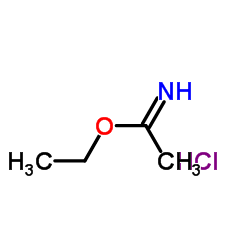Effects of chemical modification of amino groups by two different imidoesters on voltage-clamped nerve fibres of the frog.
M Rack
文献索引:Pflugers Arch. 404(2) , 126-30, (1985)
全文:HTML全文
摘要
Voltage clamped single nerve fibres of the frog Rana esculenta were treated with the amino groups specific reagents ethyl acetimidate and isethionyl acetimidate. Ethyl acetimidate is lipid soluble, relatively non-polar and can penetrate a membrane. Isethionyl acetimidate is lipid-insoluble, polar and membrane-impermeant. Treatment with ethyl acetimidate caused an irreversible reduction of Na currents and a shift of the voltage dependence of the steady-state sodium inactivation, h infinity (E), in the hyperpolarizing direction. The voltage dependence of sodium activation was much less affected and a small shift into the depolarizing direction was observed. By contrast, the non-permeant reagent did not reduce the sodium currents and the shifts of the h infinity (E) curve were smaller than the shifts caused by ethyl acetimidate. Furthermore, a small shift of the voltage-dependence of activation in the hyperpolarizing direction was observed. As the modification procedure with imidoesters does not cause a change of net charge, the results cannot be explained by an effect of surface charge modification; rather, they seem to be due to a direct effect of amino group modification on the voltage dependence of inactivation.
相关化合物
| 结构式 | 名称/CAS号 | 分子式 | 全部文献 |
|---|---|---|---|
 |
乙基乙酰亚胺盐酸盐
CAS:2208-07-3 |
C4H10ClNO |
|
Involvement of lysine residues in the binding of ovine chori...
1984-01-30 [FEBS Lett. 166(2) , 352-6, (1984)] |
|
Rapid removal of acetimidoyl groups from proteins and peptid...
1981-11-01 [Biochem. J. 199(2) , 335-40, (1981)] |
|
Studies on the structure of the ligand-binding site of the b...
1992-07-22 [Biochem. Pharmacol. 44(2) , 325-34, (1992)] |
|
An alkyl imidate labeling study of the organization of phosp...
1985-01-10 [J. Biol. Chem. 260(1) , 663-71, (1985)] |
|
Involvement of lysine residues in the binding of ovine prola...
1985-10-28 [FEBS Lett. 191(2) , 211-5, (1985)] |